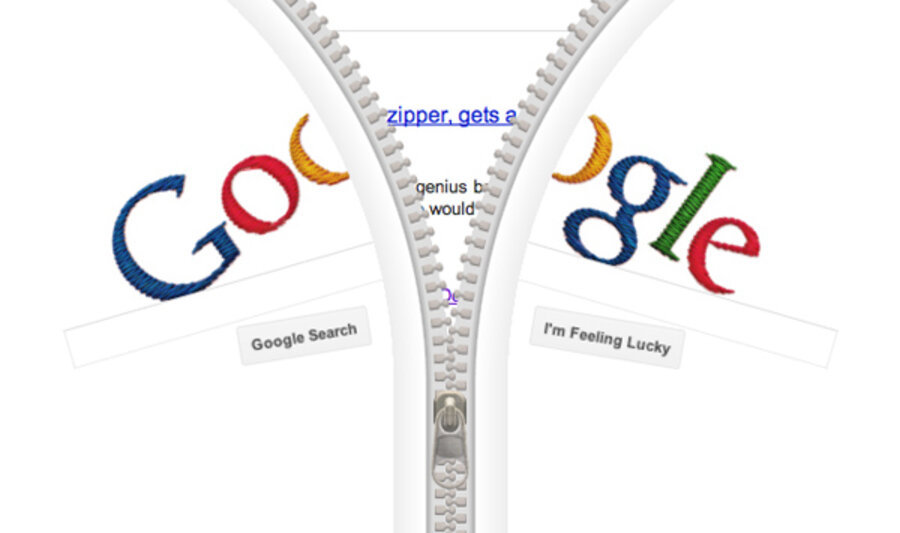Gideon Sundback: At first, the world shunned the zipper
When Gideon Sundback introduced his "Hookless No. 2" zipper – a design that would forever change the fashion industry – the world greeted his invention with a resounding "Meh."
Tuesday's Google doodle celebrates the Swedish engineer and the zipper, a ubiquitous feature for today's pants, boots, backpacks, and dresses. But when the "Hookless No. 2" debuted in 1914, people didn't get it. Why ditch buttons, hooks, and clasps, they asked? Do clothes really need newfangled technology?
Part of the problem was the device's bumpy history. Several primitive zippers existed before 1914. They were awful. Early designs jammed and pulled apart easily. They involved sharp hooks looping together, instead of Sundback's method of tight and secure metal fasteners. Sundback gets credit for inventing the zipper because he created the first practical and reliable design.
A factory could produce "over 1,500 flawless fasteners a day," according to one history of the zipper, "but there was simply no demand." Sundback removed the hassle, yet zippers were still considered simply a novelty.
Early zippers also suffered from poor marketing. They had names such as the "Judson C-curity Fastener," "The Automatic, Continuous Clothing Closure," and of course Sundback's "Hookless No. 2."
In many ways, the success of zippers went hand-in-hand with the word "zipper."
The US Army used Sundback's interlocking teeth for gear and clothing, but zipper didn't take off in civilian clothing until 1923, when B. F. Goodrich Company wanted to innovate on the standard boot. It introduced the "Zipper Boot," the first time anyone called this mechanism a "zipper." The name stuck.
By the late 1920s, designers attached zippers to all manner of footwear, baggage, and children's clothes. But respectable ladies and gentlemen still needed convincing.
"Despite the devices attributes, the public was not receptive," writes fashion historian Ronald Knoth. "The pulpit decried, 'The Hookless Fastener' as 'the Devils fingers,' [because it made it easier] to remove clothing with autonomy. It was not until 1923, that the term 'zipper' was coined by BF Goodrich, and the zipper didn’t fully come into vogue until the 1930’s."
By World War II, zippers were everywhere. The once-ignored invention took over wardrobes across the country. Now, on what would have been Sundback's 132nd birthday, it's good to remember that even fashion is full of indispensable innovations that seemed silly at the time. As Albert Einstein once said, "If at first the idea is not absurd, then there is no hope for it.”
For more on how technology intersect daily life, follow Chris on Twitter @venturenaut.







